Table of Contents
Embarking on a culinary journey through Tunisia reveals a captivating tapestry of flavors and cultural heritage. The food from Tunisia, influenced by Mediterranean, North African, Middle Eastern, and Berber traditions, offers a delightful fusion of tastes. From beloved traditional dishes to tantalizing street cuisine, Tunisian food is a treasure trove of mouthwatering delights that showcase the richness of its food culture. Let’s dive into this diverse and vibrant world of the food culture of Tunisia.
Top Ingredients of Tunisian Cuisine
In Tunisian cuisine, a rich tapestry of flavors is woven together through the expert combination of various ingredients. Here is a list of the most commonly used ingredients that form the foundation of Tunisian culinary traditions:
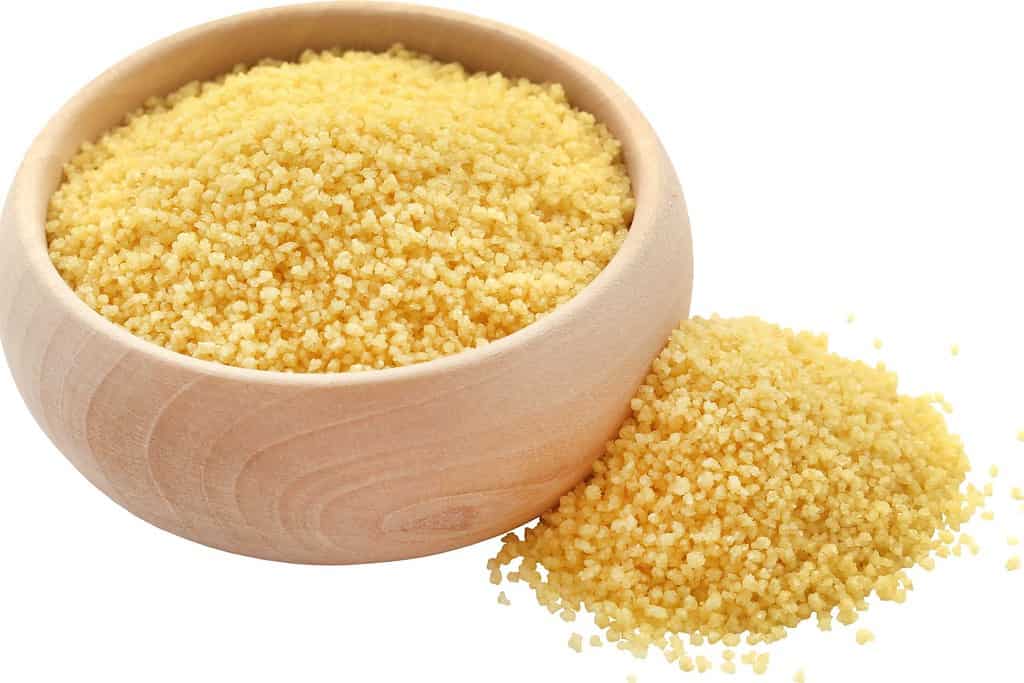
Couscous: A staple in Tunisian cuisine, couscous is often served as a base for various dishes and can be prepared in different ways, such as traditional steamed couscous or couscous served with spicy stews.
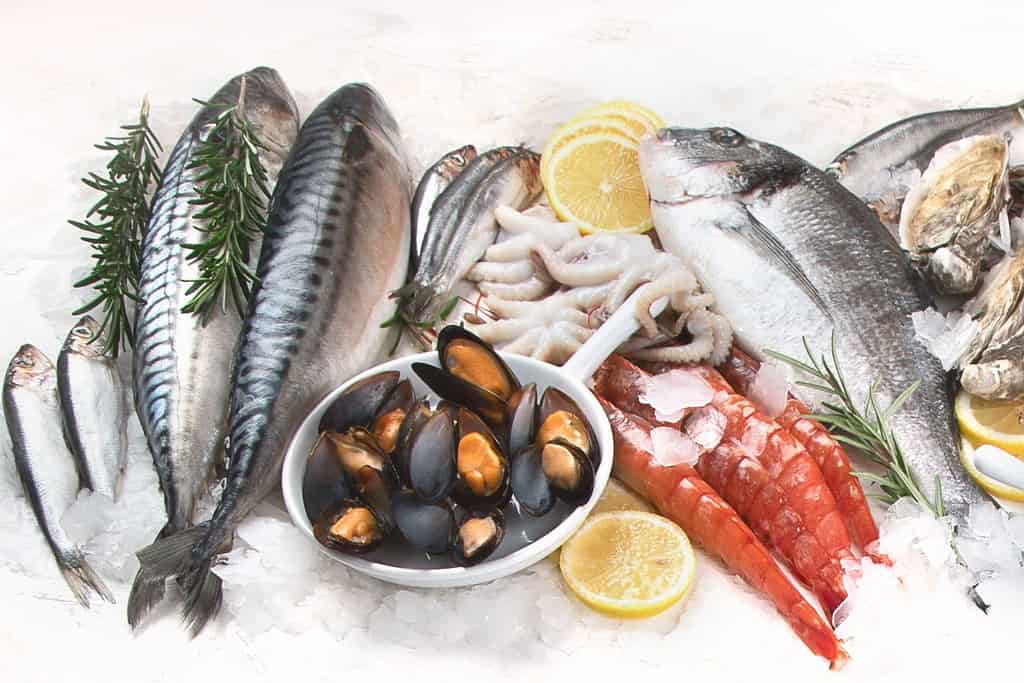
Lamb and Seafood: Lamb and seafood are popular meats in Tunisia and play a vital role in many traditional dishes like Mechoui (roast lamb) and Brik (fried seafood pastries).

Spices and Herbs: Tunisian cuisine is known for its bold and aromatic spices, including cumin, coriander, paprika, harissa (a hot chili paste), and mint, which enhance the depth and flavor of their dishes.

Olive Oil: Olive oil is a fundamental element of Tunisian cooking and is used generously in salads, stews, and drizzled over bread.

Onions, Garlic, and Bell Peppers: These three ingredients form the base of many Tunisian dishes, providing a savory foundation for a wide range of flavorful creations.
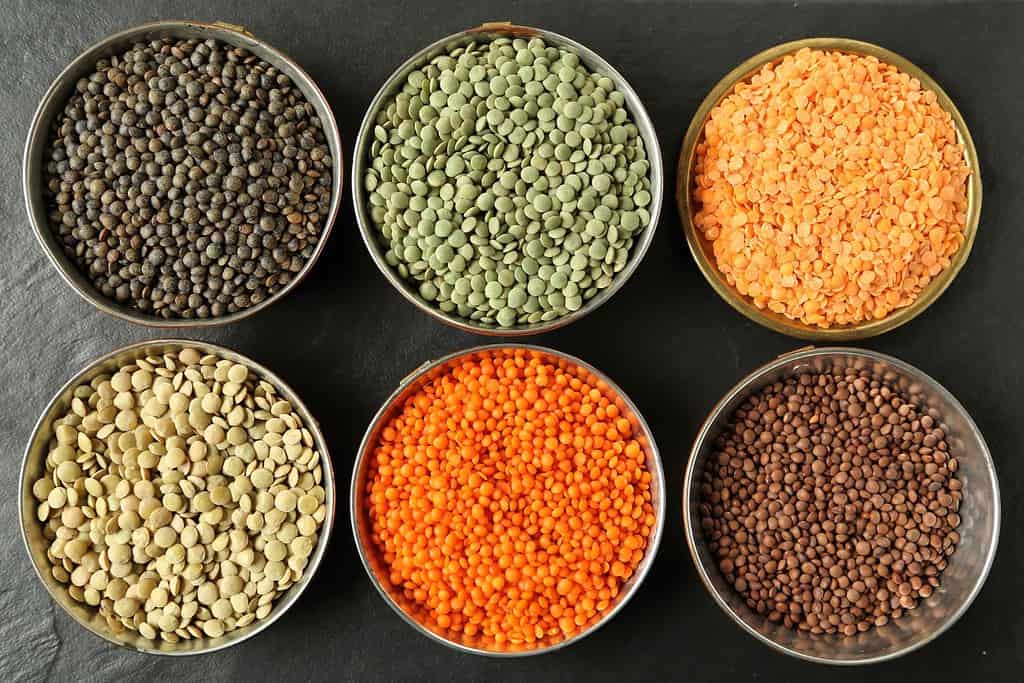
Lentils: lentils are versatile ingredients used in soups, stews, and salads like Tunisian chickpea salad, contributing a hearty and earthy taste.

Tomatoes: Tomatoes are frequently used in Tunisian cuisine to add a tangy and robust flavor to couscous, tagines, and various sauces.

Harissa: Harissa, made from chili peppers, garlic, and spices, is a signature condiment in Tunisian cuisine, adding fiery heat and complexity to many dishes.
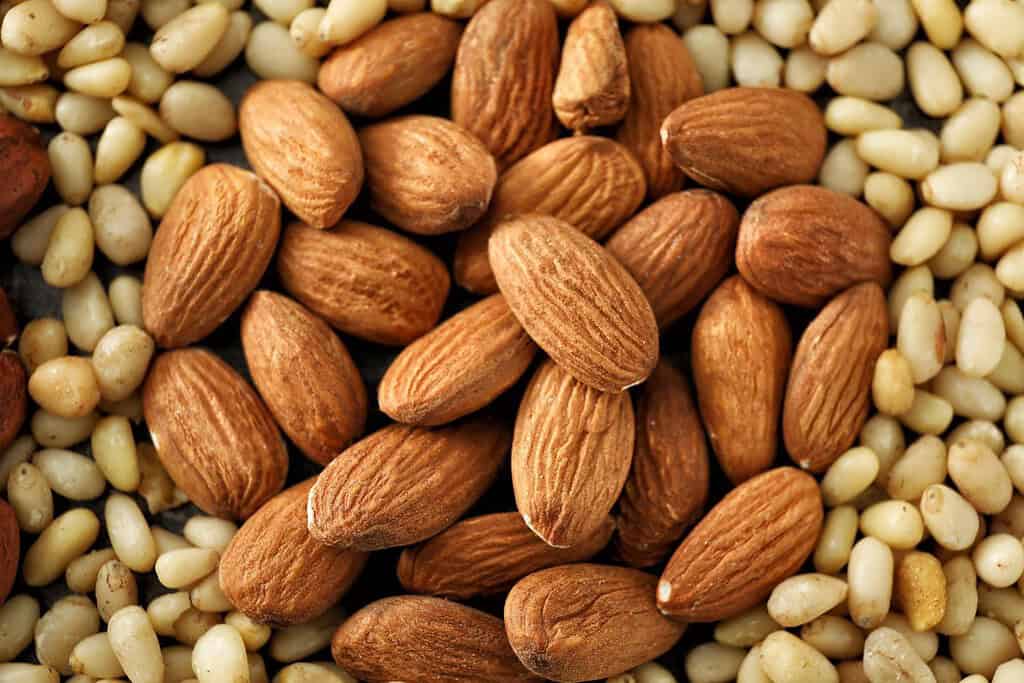
Almonds and Pine Nuts: Almonds and pine nuts are commonly used in Tunisian cooking, providing both texture and richness to dishes like pastries and desserts.
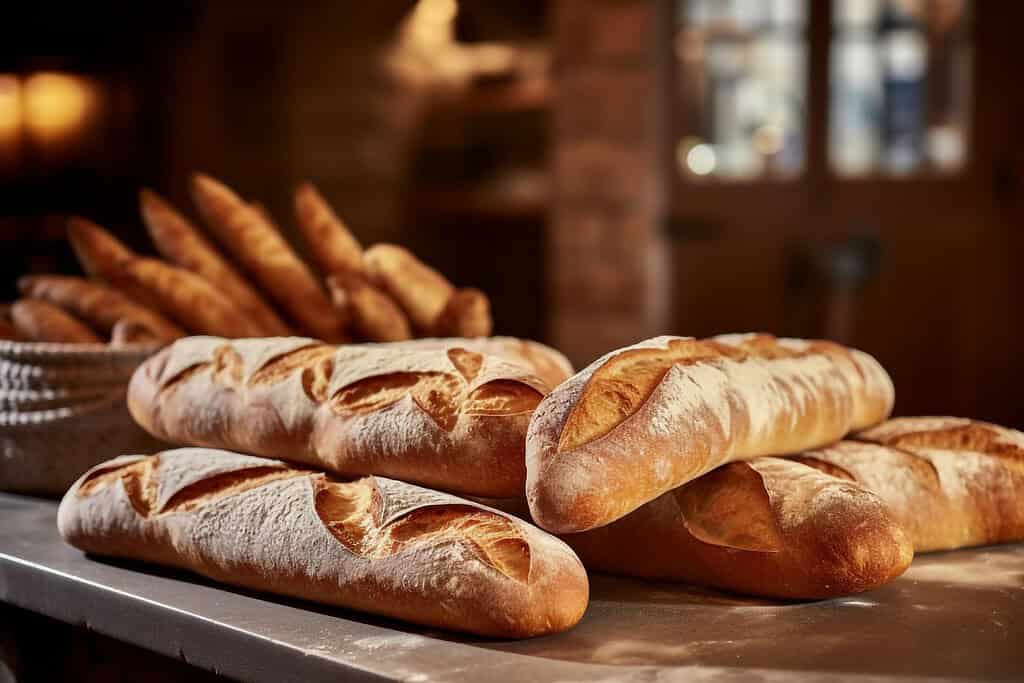
Tunisian Bread (Khobz): Bread is a fundamental component of Tunisian meals, and Khobz, a round flatbread, is commonly served with almost every dish to scoop up sauces and savor the flavors.
These ingredients, along with a wide variety of herbs, spices, and locally sourced produce, contribute to the diverse and enticing flavors found in Tunisian cuisine.
The diversity of food from Tunisian cuisine
Tunisian cuisine offers a captivating variety of flavors and dishes that reflect the nation’s rich history and cultural diversity. Influenced by Mediterranean, Arab, Berber, and French culinary traditions, Tunisian food showcases a unique blend of ingredients and techniques. One of the most renowned dishes is Couscous with Lamb, a flavorful combination of tender lamb, aromatic spices, and steamed couscous grains. This dish symbolizes Tunisian hospitality and is often served at festive gatherings. Another beloved Tunisian specialty is Brik, delicate fried pastries filled with seasoned egg, tuna, capers, and parsley, offering a delightful culinary experience.
The heartiness of Tunisian cuisine is exemplified in its grilled Kofta, prepared with various meats like lamb, beef, or chicken, seasoned with a delightful blend of spices. The country’s fondness for stews is evident in Chakchouka, a savory mixture of tomatoes, peppers, onions, and spices, often accompanied by crusty bread. For a vegetarian option, Mechouia stands out, featuring grilled vegetables with garlic, olive oil, and spices, served with fresh bread. Another popular choice is Malsouka, a savory pastry filled with ingredients like seafood, meat, or vegetables, providing a crispy texture and flavorful experience.
Satisfying the sweet tooth, Tunisian cuisine presents delightful desserts like Baklava, a rich pastry made with layers of phyllo dough, honey, and nuts, commonly enjoyed during special occasions. The diversity of Tunisian food is further exhibited in its regional specialties, with each area showcasing distinct recipes and culinary techniques. Whether indulging in the succulent flavors of Kofta or relishing the comforting taste of Chakchouka, exploring the variety of Tunisian cuisine is an adventure in cultural richness and gastronomic pleasure.
While visiting beautiful Tunisia, you can try all of the best recipes from Tunisian cuisine. We have available a wide range of Tours in Tunisia that you can choose to explore the country.
Best Foods in Tunisia
Tunisian cuisine offers a delightful array of dishes that tantalize the taste buds with their rich flavors and cultural significance. While it’s challenging to single out a definitive list of the “best” foods, some dishes stand out as particularly beloved and iconic in Tunisian cuisine.
Tunisian cuisine is known for its creative use of spices, such as cumin, coriander, cardamom, turmeric, cloves, cinnamon, ginger, garlic, chilies, saffron, black pepper, and dried mint for its rich and flavorful dishes. The result is a harmonious blend of aromatic spices and vibrant herbs that make Tunisian food truly exceptional.
Most famous Tunisian foods
Here are the top most famous foods in Tunisia that have garnered recognition both locally and internationally:

Couscous: Considered a staple of Tunisian cuisine, couscous is a versatile dish made from steamed semolina wheat granules. It is typically served with a flavorful stew made from meat (such as lamb or chicken) and vegetables, seasoned with spices like cumin and coriander.

Brik: Brik is a popular Tunisian street food and snack. It consists of a thin pastry filled with a mixture of egg, tuna, capers, and spices. The pastry is then deep-fried to a crispy golden perfection, making it a delicious and satisfying treat.

Mechoui: Mechoui is a traditional Tunisian dish made from roasted whole lamb or goat, seasoned with a blend of spices and herbs. The meat is slow-cooked to tender perfection and often enjoyed at festive gatherings and celebrations.

Lablabi: Lablabi is a hearty and comforting Tunisian soup made from chickpeas, garlic, olive oil, and spices. It is typically served with pieces of stale bread soaked in the flavorful broth and garnished with toppings like boiled eggs, capers, and olives.

Harira: Harira is a rich and flavorful soup commonly enjoyed during Ramadan and other special occasions. It contains a mixture of lentils, chickpeas, tomatoes, and a variety of herbs and spices, creating a satisfying and nourishing meal.
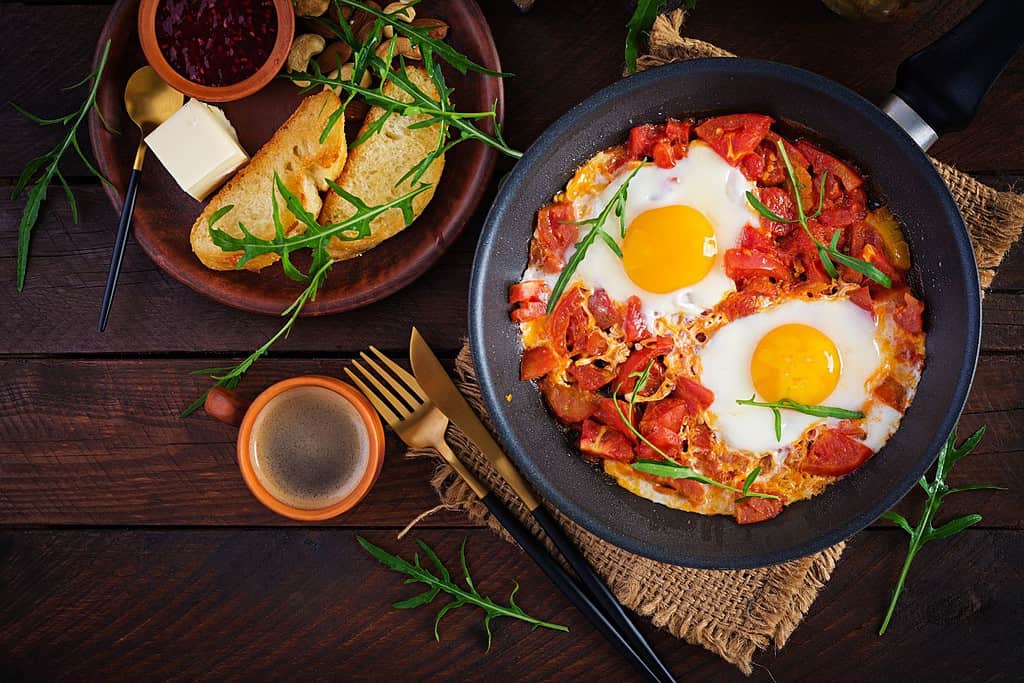
Ojja: Ojja is a Tunisian dish consisting of eggs poached in a spicy tomato and pepper sauce. It often includes ingredients like merguez sausage, onions, and a blend of aromatic spices. Ojja is traditionally served in a hot skillet and makes for a hearty breakfast or brunch option.

Makroudh: Makroudh is a sweet Tunisian pastry made from semolina dough filled with a mixture of dates and nuts. The dough is then deep-fried and dipped in honey or sugar syrup, resulting in a delightful dessert enjoyed on special occasions.
These renowned Tunisian dishes showcase the richness and diversity of the country’s culinary heritage, making them popular not only within Tunisia but also among food enthusiasts around the world.
Tunisian Desserts
Tunisian desserts offer a delightful conclusion to a satisfying meal, showcasing a blend of sweet flavors and delicate textures. These desserts are deeply rooted in Tunisian culture and are often enjoyed during celebrations, festivals, and special occasions. Some popular Tunisian desserts include:

Mhalbi: This is one of Tunisia’s most cherished desserts, especially during Eid celebrations. Mhalbi is a creamy pudding made with milk, sugar, and a medley of nuts like almonds, pistachios, and dates. The combination of luscious milk and the richness of dried fruits makes it an indulgent treat.

Zlebia: A beloved street food, Zlebia consists of deep-fried batter soaked in sugar syrup, resulting in crispy, coiled shapes that are delightfully sweet and sticky. It’s a popular choice during Ramadan and other festive occasions.

Roz bel Laban: Similar to rice pudding, Roz bel Laban is a creamy dessert made with ground rice, milk, sugar, and fragrant cardamom. It is often garnished with chopped pistachios, almonds, or rose petals, adding a lovely nutty and floral touch.

Baklava: Although Baklava is a dessert with origins in the Middle East, it has become a favorite in Tunisian cuisine. Layers of phyllo pastry are filled with chopped nuts and sweetened with honey or sugar syrup, creating a delectable and flaky treat.
The culture behind Tunisian food
The culture behind Tunisian food is deeply rooted in tradition, hospitality, and community. Tunisian cuisine reflects the country’s rich history and diverse cultural influences, blending elements from Mediterranean, North African, Arab, and Berber culinary traditions. Food holds significant cultural importance in Tunisia and plays a central role in social gatherings, family events, and religious celebrations.
Hospitality is a cornerstone of Tunisian culture, and sharing food with guests is a deeply ingrained tradition. When visitors arrive at a Tunisian home, they are warmly welcomed with an array of delicious dishes, reflecting the host’s generosity and desire to make their guests feel at home. Meals are often communal affairs, with everyone seated around a shared table or tray, emphasizing the importance of togetherness and solidarity in Tunisian culture.
Also, read:
Tunis, Sfax, and Gabes

Embark on a culinary journey through Tunis, Sfax, and Gabes, and dive into the captivating flavors that have been passed down through generations. Let the traditional dishes of each city paint a delicious picture of Tunisia’s culinary heritage, inviting you to relish the unique pleasures of these remarkable regions.
Within the captivating realm of Tunisian cuisine, every region brings its own distinct flavors and culinary traditions. Join us on an exploration of Tunis, Sfax, and Gabes, and discover the delightful diversity in their traditional foods.
The variations in dishes from each Tunisian city can be attributed to a combination of factors, including geography, historical influences, and the dominant ethnic groups residing in each area. Tunisia’s diverse landscape, featuring coastal areas, fertile plains, and arid deserts, has shaped the availability of specific ingredients and farming techniques in different regions. This, in turn, has led to differences in the types of dishes that have developed in each city.
Tunis’s Couscous Royale boasts fluffy couscous paired with tender lamb, flavorful caramelized vegetables, and chickpeas, representing Tunisian hospitality at its best. Sfax’s Brik à l’Oeuf takes a delectable twist on street food, with fried pastries filled with eggs, tuna, capers, and harissa for a mouthwatering taste sensation. Gabes’s Lablabi offers a spicy and hearty variation of traditional chickpea soup, warming the palate with its bold flavors.
For instance, in Tunis, as the capital and a cultural melting pot, the culinary scene is more diverse, influenced by a blend of traditions from various regions. Sfax, with its coastal location, has culinary influences from Mediterranean cuisine and neighboring regions, resulting in unique dishes like Brik à l’Oeuf. In Gabes, the Berber and Arab influences prevail, contributing to spicy and robust dishes like Lablabi.
When comparing the three cities, Tunis offers a wide array of dishes influenced by its cosmopolitan nature, Sfax highlights seafood and Mediterranean flavors, and Gabes entices with bold spice combinations. Each city proudly showcases its distinctive culinary identity, enriching the multifaceted tapestry of Tunisian cuisine.
Tunis

Commencing our culinary exploration in Tunis, the capital city of Tunisia, we are introduced to a vibrant food scene that reflects the nation’s rich and diverse culinary influences. The city boasts a fusion of traditional Tunisian dishes and international flavors. As we venture through the bustling markets and street food vendors, the aroma of freshly baked bread and fragrant spices fills the air. Tunis’s culinary landscape is a harmonious blend of tastes, offering an extensive array of dishes to satisfy every palate.
Famous food from Tunis
- Couscous Royale: A fragrant couscous dish accompanied by lamb or chicken, caramelized vegetables, and chickpeas, symbolizing Tunisian hospitality.
- Brik à l’Oeuf: Crispy fried pastries filled with eggs, tuna, capers, and harissa, a delightful Tunisian street food specialty.
- Tunisian Mechoui: A succulent roasted lamb dish seasoned with a blend of spices, often enjoyed with flatbread and spicy sauces.
- Lablabi: A spicy and hearty chickpea soup seasoned with cumin and harissa, providing a warming and bold flavor experience.
- Mloukhia: A traditional Tunisian stew featuring a viscous mallow leaf sauce served with meat, typically lamb or chicken.
- Tunisian Seafood Couscous: A seafood lover’s delight, with couscous served alongside a medley of fresh seafood, herbs, and a flavorful broth.
- Makroudh: A sweet pastry filled with dates, deep-fried to golden perfection, and sometimes dusted with powdered sugar.
Sfax

Continuing our culinary journey to Sfax, a city renowned for its deep-rooted culinary traditions, we find ourselves immersed in the essence of traditional Tunisian cuisine, with a focus on seafood and Mediterranean-inspired flavors. Sfax cuisine celebrates the bounty of the sea and the use of locally sourced ingredients, creating a unique gastronomic experience.
Famous food from Sfax
- Sfaxian Seafood Couscous: A variation of seafood couscous, abundant with freshly caught fish and shellfish, served with aromatic herbs and spices.
- Brik Sfax: A delightful twist on the classic Brik, with an emphasis on seafood, often filled with tuna, shrimp, or other marine delicacies.
- Mloukhia Sfax: A regional adaptation of the traditional Mloukhia dish, featuring the mallow leaf sauce paired with Sfaxian spices and seafood.
- Grilled Sfaxian Octopus: Tender octopus grilled to perfection and seasoned with local herbs and spices, offering a taste of the Mediterranean.
- Sfaxian Paella: A Tunisian take on the Spanish classic, with a seafood-rich paella featuring saffron, rice, and a medley of fresh ingredients.
- Bambalouni: A popular street food treat, these deep-fried doughnuts are coated in sugar and often enjoyed with a cup of tea.
Gabes

Our culinary voyage concludes in Gabes, a city steeped in history and renowned for its robust and flavorful dishes. Gabesian cuisine is characterized by its bold use of spices, creating dishes that tantalize the taste buds with a burst of flavors.
Famous food from Gabes
- Gabesian Seafood Tagine: A savory tagine featuring a variety of fresh seafood, aromatic spices, and a tomato-based sauce, served with couscous or bread.
- Harissa: A fiery chili paste made from red peppers, garlic, and spices, often used to add a spicy kick to many Gabesian dishes.
- Kebab Gabes: Tender marinated skewers of chicken, lamb, or beef, grilled to perfection and served with flatbread or rice.
- Rfissa: A flavorful and hearty dish made with shredded bread, chicken or lamb, and a rich sauce flavored with spices and herbs.
- Zgougou: A traditional dessert made from ground pine nuts, sugar, and spices, typically served during festive occasions.
- Shorba Gabes: A comforting and aromatic soup made with vegetables, lentils, and a blend of Gabesian spices.
- Bambalouni Gabes: Gabes’s take on the popular fried doughnut, often flavored with local spices and enjoyed as a sweet treat.
Book Your Trip to Tunisia Today!
Embark on an unforgettable journey and explore the allure of Tunisia through our exclusive tours.
More About Tunisia
[the-post-grid id=”54130″ title=”Tunisia Main page”]
